Introduction
The various designs used in display and control systems are very useful in the control of human factors within transportation. This article gives an in-depth review of several design factors based on information controls, displays and system operations. The aim is to discuss the various experiences related to human factors analysis within the transport industry. Personal experiences discussed in this article are all related to human factors within the transport industry. The system designs enable easy analysis and at the same time reduce the process of applying manual operations to the transport system. The operations system has got the powers to assess the behaviors on roads, rail and airways, hence assisting in the analysis of the level of performance and safety of the entire systems (Sanders and McCormick, 1992). The discussion focuses on providing appropriate means through which information could be presented to enhance safety within the transport system.
The use of the GPS car navigation design needs to consider the human interface for controls and displays. There exists a human phobia of avoiding at all costs pushing the wrong button on the design; this may lead the drivers to choose not the use the GPS system. The attention demands of interacting with the system may in some occasions affect drivers’ abilities to control the vehicle; this causes distraction and hence may lead to road accidents. Most of these critical issues are related to human control interface. The human factors related to unclear road surface signs like ‘keep clear’ signs for cyclists may cause inattention and vision-related problems hence resulting in accidents. In the design of passenger seats, the comfort of the passengers is most important. This is for the purposes of avoiding air travel health-related problems such as low back pain, stiffness of the various body joints as well as cases such as deep vein thrombosis. These effects are related to design efficiency and how well the passenger seats fit the physical orientation of the users. The design may at times interfere with passengers’ exit abilities in case of emergency evacuation and at the same time difficulties in coping with brace position in the instances of emergency landing (Schuler and Namioka, 1993).

The systems used provide information that is either static or moving providing eligible data which is visible and readable. Auditory displays also form part of the design mechanisms and are always utilized as supplement to visual displays. This makes it easier for necessary changes to be made on vehicle or system controls. Automated systems are also utilized, but their use has since caused some difficulties especially to the illiterate persons (Sanders and McCormick, 1992; Andersch et al, 1969).
Qantas Airplane Experience
An experience I encountered was with my flight from South African airport flying back to Melbourne. I flew to South Africa aboard a JAL flight to Narita airport. One of the matters which caught my attention was the design of their seats. The flight was indeed very smooth and good experience with excellent services. On the way back to Melbourne, I flew Qantas and stopped over at Sydney airport. The footrests of the seats within the economy class were made of traditional bars which made it difficult for the comfortable extension of feet. There was also some sliding sensation widely felt within the economy class seats. Also another notable characteristic within this plane was the design of its seats; the Economy class of the plane was designed with Marc Newson-designed seat. For the purposes of passengers’ comfort, the seats have good entertainment and connectivity devices; they were fitted with USB and internet ports as well as in-seat phones. The seat width was 18.1″ contrary to other airlines which have up to thirty-four inches in width. The seats were further fitted with fold-out Television screens. The design in row 79, presents lots of risks at night, since the free space provides passengers room to hang around in the middle of the night. However, for the purpose of passenger safety, the design of the footrest should be linked to the seat cushion fitted with flexible seat front which could help in eliminating the sliding sensation.
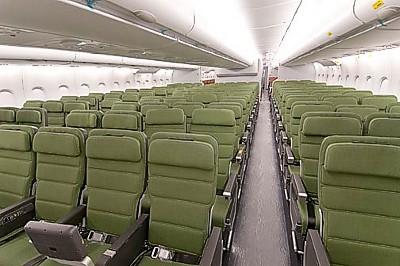
The plane design should focus on passenger comfort. There is also need to include pressurized cabin to make the plane all-weather, besides all these, the overall design should look attractive to the consumers. There are numerous substitute aircraft within the industry that are readily available for sale with well-fitted seat designs having movable headrests as well as increasing the living space for each individual passenger. This calls for Qantas airline to put extra effort in order to convince customers of the superiority safety of their transport services. The use of the computer increases the possibility of switching individual units keeping other things constant (Suchman, 1995)
The prevailing technology on the system and operations management at Qantas could make it possible for quick advancements to be made on the seats for the benefit and satisfaction of consumers. Placing computers behind every seat and providing system management provides up-to-date means of approaching issues like detecting mechanical problems and also for entertainment purposes (Schmidt & Simone, 1996). This appears to be a great boost to the company and industry at large. Good management of seat designs could ensure improvement in manufacturing and tooling capabilities. Strength could be drawn from the talented and experienced staff for the purposes of minimizing human factor errors; this provides the possibility of blending superior performance capabilities. Everyone within the management team should have the necessary qualifications in system management (Wickens, Lee, Liu & Gordon-Becker, 2003).
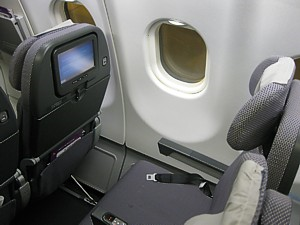
The design of the horizontal arm of the seat should allow for activities to be performed within convenient arm’s reach. The area should be normalized to allow the usage of certain frequently used control items, the surface of the arms chair should be slightly slanted to allow the usage of visual tasks. This is since such activities require better posture, less movement of the trunk and high comfort. The seats should allow arms relaxation of the arms and elbow maintained at a ninety degrees angle. There is need for well-designed adjustable footrests capable of accommodating more users as well as permitting relaxed upper arm positions. Poor design of the economy class seats may contribute towards health and safety issues, the seats should be adjustable to avoid shoulder and back pain which ultimately reduces productivity (Dix, 1994).
The adjustable seats in operation with automated system should enable easy use by passengers aboard. This acts as a big boost in the level of comfortability process since there exists clear and easy to follow instructions engraved on the seats hence probability of approaching the system management issues with minimum human errors remains high. The system makes it possible for operations process to run without further assistance from the management team comprising of highly motivated workers working under very minimal supervision (Noyes, 2001).
Poor design of the seats causes some health problems to passengers such as Deep Vein Thrombosis. This condition denotes reduction in blood flow and increases in strains which results in the damage of vein. The design should consider flexible and sufficient legroom. Sitting for long hours results in muscle fatigue and hence discomfort, this is because the kind of posture passengers are subjected to is directly related to comfort. Therefore the seat designs should try to offer lumbar support as well as enough spacing. The seat should allow for even distribution of weight in order to avoid unnecessary stress at the back (Wright, 1993).
The prime role of Qantas is to help customers obtain safe services that are friendly to human health-related conditions. This could be achieved by considering various human body parts and at the same time cases of emergency. Installation of Soft Systems Methodology which supports the working system of the passenger-related devices including seats provides customers with efficient and comfortable services throughout the flight. The new automated package could help in providing even faster coordination of safety on the various systems connected to the seats. The technology at the same time makes it easy for customers to link to the services of Qantas partners and choose services that meet their personal business objectives (Wright, 1993).
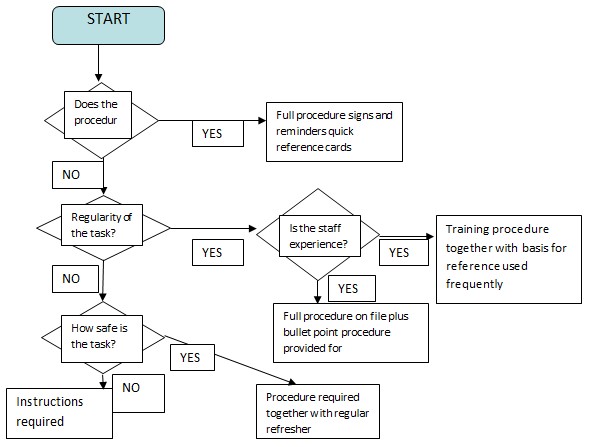
Road Experience
This involved the experience I encountered in using Cyclist road surface signs in one of the far-east countries, a lot was involved which required some level of discipline for the purposes of enabling things to move in order. The road was busy and high stressed demanding a lot of keenness on the drivers. In such situations road surface signs seem beneficial since they are always clear and easily noticed, however, within this area the road surface signs had not been maintained for long hence paint used in marking faded away.
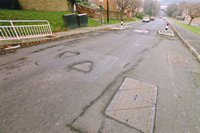
This brought me lots of difficulties, especially in communicating traffic management with cyclists. Specifically “Keep Clear” sign giving directional information to cyclists was missing making it difficult to take swift remedial actions whenever necessary. The events included; cars passing in opposite directions with cyclists, each required to keep and maintain their own side of the road. There was no clear cycle lane definition especially through complex junctions. “Keep clear” road markings should have been applied to encourage road discipline since they could act as a reminder to drivers on keeping wide berth, hence ensuring cyclists’ safety. Those using motorbikes, as well as bicycles within the very dynamic environment of my experience, acted ruthlessly. The experience was that I tried very hard to avoid colliding with the cyclists at all costs making the whole experience kind of interactions leading to emergence of some sought of moral dimension (Walker, 2005a).
“Keep clear” markings should have been used for the purposes of maintaining gaps for cyclists, this also proved necessary in places where roads were closed by gates ensuring less obstruction. There was the tendency of some cyclists riding in groups abreast, this provided car drivers with difficult time moving past them. The experience shows some level of selfishness towards reasonable use of roads by cyclists as revealed by motorists. This lays claim on the nature of the moral model the cyclists based their arguments on. The whole issue involved creation of appropriate policies based on theories such as attribution theory and attitude concepts. The ability of drivers to avoid bumping into cyclists was an experience clearly dependent on the working model of all parties using the roads. Theoretical abstractions involved my ability as the driver to anticipate the intentions of the ignorant cyclists based on stipulated systems and models. This could be reduced through clear demarcation of roads, by use of keep clear signs, which provides cyclists with their own different from that of motorists (Walker, 2005a).
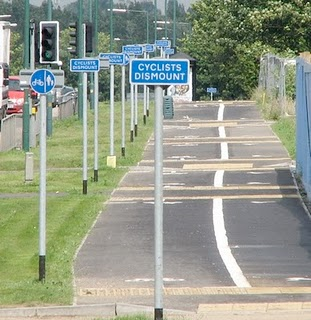
Disciplined use of road signs is an important component for safety to be ensured on our roads. Its application is important since it provides drivers from all nations with the opportunity of learning from one another hence improving on their points of weaknesses (Kroemer and Grandjean, 1997). Better results are realized when both drivers and cyclists apply the recommended means, maintenance of the surface signs also enhances road communication within a practical social environment. Incorporation of clear communication designs through surface signs present good strategies hence driving towards common goal of road safety. This contributes towards easy marshaling of resources and installation of efficient communication and operation system that makes it easier for the management to keep clear traffic signals (Wickens et al, 2003).
The various collisions and dangers involved on the roads at this particular experience depended on individual interpretation of road signs by users. Descriptions on-road scene pictures of cyclists were left to individual interpretation; the difference in the use of language concerning road signs determined the outcome of individual scenes (Walker, 2005a). People were at times blinded by what is referred to as individual preconceptions and this made road users unable to see and at the same time detect the obvious. Such incidences were a result of confusion between signals. Some sections of the road had many signals prompting the drivers to read the wrong ones. However, the various models designed for the purposes of allowing people to anticipate others’ behaviors allowed motorists to make useful observations concerning road operations’ working models. The observed behaviors and physical attributes such as cyclists’ appearances (male or female), type of vehicles provided visible characteristics helpful for the various road users.
The identification is well followed by attribution step where all unobservable characteristics and principles are practiced. These include psychological and moral characteristics which comprise moral model. Attribution theory could well be utilized in explaining such scenarios. However, Kelley’s covariation model suggests the consideration of the information on the cyclists and drivers in different environments and circumstances. Research revealed that in most cases stereotypes of different kinds of road users dominate. The theory of planned behavior could also be used to help guard situations between motorists and the cyclists; this is since the theory links attitudes to behavior (Walker, 2005b).
Implementation of various modern technology within the transport sector, calls for the road users’ ability to put into practice knowledge theoretically learned in class. The drivers and cyclists should be convinced that they have the right knowledge that could be applied in various sections of the road within all environments. The various procedures used in operating road signs such as keeping clear should be known by motorists for accountability purposes (Wickens et al, 2003).
The management should spare some time for reviewing “Keep clear” surface signs and their prime effects on motorists. This would lead to generation of more information that might be of help in future. The transport industry should focus on operations-driven activities which guarantee goal achievement. These activities include means through which roads could be improved, reinforcement of keeping clear signs within these roads and the processes undertaken on resource management. The process of putting road surface signs should be based on the technicality of the road section (Wickens et al, 2003).
Experience with using car navigation
My other experience was working with a GPS-controlled vehicle which was actually designed to help in the process of tracking pre-determined directions and destinations through the use of video feedback applying wireless techniques. I had no prior knowledge of most of the principles applicable in the system. This included control of speed and direction of the vehicle using monocular video images transmitted through a video capture card. The devices used, that is, video transmitters were located right on top of the dashboard within the car I was using. Visual Basic was used on the system to process the images on the PC and vector direction control was transmitted to radio controller used to determine the speed and direction the car was moving towards (Paul, 2009).
The video-enabled the use of a graphical user interface designed to assist in development of the whole process. Operation of the system required ability to think and solve problems outside the existing knowledge base. It required major engineering skills for better engagement in the transport system. The vehicle specifically used utilized the video feedback assisting in the control of vectors from radio-controlled vehicles which would help in identifying specific destination points within specified distances. My difficulty was that I had no prior knowledge of control theory, image processing as well as using the designed graphical user interface (Paul, 2009).
The in-dash navigation system I was using had an external GPS antenna, and hideaway connection box which contained the overall inputs and outputs mounted under the seat. The whole system was like connected to the seat, whereby the moment I interfered with my seat, the whole system was paralyzed leaving me in direction less. The system had connection to the ground, vehicle speedometer sensor as well as parking brakes.

I had relied on my personal experience in choosing the route which I thought was fastest which I had earlier been recommended by a friend. However, the in-car navigation system was fixed to assist in solving the subjective human experiences. Due to the fact that I was unable to interpret the accurate graphical information provided on the screen, I opted for the trial and error approach which at the end of it gave disastrous results. Trying to locate route from a large map provided and at the same time driving was not an easy experience, which is why the use of the in-dash navigation system proved necessary.
The GPS should be enabled to provide both visual and audible directions making it easier to follow the route guidance towards the stipulated destinations. It should allow only feeding into the system the destination address or any point of interest like petrol stations, restaurants and hence no need of knowing the street address for further guidance. The use of the GPS, just made driving safer since it gives the driver ability to keep both hands on the steering wheel while obtaining the direction through audio and visually. The driving hazard I encountered such as making wrong turns and deviating into isolated roads could be solved by the use of this device, since it provides easy-to-follow directions preventing occurrence of dangerous circumstances while driving hence peace of mind to drivers. The whole trip could be more enjoyable since unintentional moves are all avoided, hence making the whole process faster (Paul, 2009).
Driving errors are mostly attributed to human capabilities and errors leading to failures in safety management. The errors giving rise to these issues range from human perception, memory, decision-making, communication and team resource management, there is also probability of lack of proper training arrangements. (Shorrock and Kirwan, 2002; Baber and Stanton, 1996).
The process of bringing new format within the work design proves to be a challenge to the drivers because of the high costs involved as well as time duration required to understand the whole process. The engineering calculations involved could reveal that the task design made it difficult for the driver to operate efficiently (Suchman, 1987). The use of manual equipment like hand-drawn maps makes it difficult for drivers to follow recommended routes at the first attempt. The process of trying to minimize human factors has to undergo several attempts before settling for right task designs; this proves quite time-consuming. There is need for the motor companies to adopt computerized concepts which provides a prerequisite to overall development and improvement of the GPS design (Strauss, 1985).
The application of information technology with the operations provides the stage of using modern automated systems for the purposes of improving general performance. The use of in-built GPS design enables involved drivers to easily evaluate different routes and destinations hence improving safety and efficiency in driving. The different GPS models should be used for the purposes of structuring other means of approaching emerging road network problems. The in-built GPS methodology provides necessary intervention processes in cases where drivers are operating in totally different (Sandom and Harvey, 2004).
The various automated operation stages of the GPS system could enable various engineers to consider the value of the system and possibility of the system fitting well into operations standards of any country. There is a stage that allows the process of evaluating different services relevant to operations, hence minimizing any human factor involved (Sandom and Harvey, 2004).
The kind of human errors associated with driving could as well be controlled and evaluated using GPS equipment which has the capability of detecting destination points and at the same time regulating the vehicle speed. There has been difficulty in describing human factor error at the level from which supporting evidence could be identified owing to unclear model designs. Difficulties in deducing cognitive error could paralyze the operations since there is no clear design that could reveal any external indications; this makes the whole task design process rigid. Selection of important taxonomies used in describing the situation proves to be difficult making the human factor inefficient and difficult to analyze. The use of manual maps led to great confusion in the process of classifications since various models could not be identified and matched with proper functions. The following figure could be used for the purposes of predictive analysis of the whole situation hence avoiding the various human factor errors (Paul, 2009).
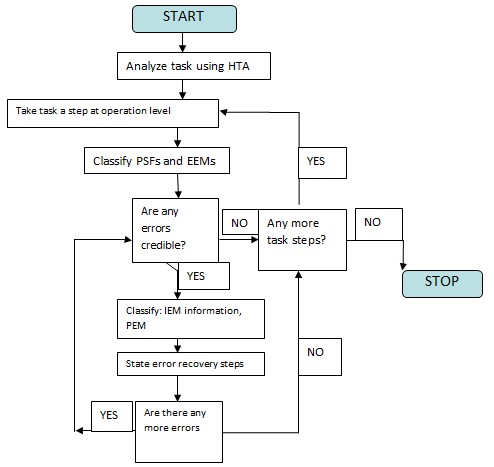
The process through which the design process is built proves the levels of proficiency and the credibility of engineers which should present one of their key turning points. Operations performed under such designs should be dynamic as compared to other models, hence should have the capability of detecting navigation errors within less time possible. The reduction in the amount of manual work performed makes it more convenient for use as well as improves the efficiency of road operations. The new system should also enable the possibility of calculating the traveling distances ensuring efficiency and safety in using roads hence convenience to all travelers (Baber and Stanton, 1994).
Conclusion
Emphasis should be placed on the importance of seeing safe and efficient mobility as closely related goals within transport sector. This would help in the processes of changing the magnitude experienced towards transport-related accidents and injuries. The essay achieved its purpose of discussing the various experiences which relate to human factors analysis within the transport industry by giving clear examples with related designs and their effects on humans within transport.
The analysis reveals that the use of computer systems proves to be extremely powerful and helpful in the processing of data necessary for minimization of human errors within the transport sector. Consideration of design mechanisms is also necessary before the real application is put into practice. From the first experience comfort level accorded to travelers seem of great importance since it acted as a determinant on the level of safety within the transport sector. Vehicle Navigation systems present the latest trend in modern engineering networks in conjunction with electronics applications. The electronics have been well utilized to ensure simple and safer driving within the transport system. The transport market enjoys the availability of in-car navigation systems that provide hassle-free directions enabling easy access to destinations. However, training is necessary on the basics of system operations since it plays a very important role in improving safety within the transport sector (Lovelock and Wirtz, 2007). The overall experience was terrible due to the failure of the understanding of system operation management. Consumer expectations and service provisions as well as a poor level of communication could breed disastrous results.
References
Andersch, E.G., Staats, L.C., & Bostom, R.N. (1969). Communication in Everyday Use. Holt, Rinehart & Winston, New York.
Baber, C. & Stanton, N.A., (1994). Task analysis for error identification. Ergonomics 37, 1923–1941.
Baber, C. & Stanton, N.A., (1996). Human error Identification techniques applied to Public Technology. Ergonomics, (27), 119–131.
Dix, A. (1994). The Human Interface. Assembly Automation, 14 (3), 9-13.
Kroemer, K.H.E. & Grandjean, E. (1997). Fitting the task to the human. London: Taylor and Francis.
Lovelock, C.H., & Wirtz, J., (2007). Services Marketing People, Technology, Strategy .(6th Ed.) NSW: Pearson Prentice-Hall.
Noyes, J. (2001). Designing for Humans. Hove, UK: Psychology Press.
Paul, R. (2009). Upgrade your Driving Experience with In-Car GPS for Improved Travel Quality. Web.
Sanders, M.S. & McCormick, E.J. (1992). Human factors in engineering and design. New York: McGraw Hill.
Sandom, C., & Harvey, R.S. (2004). Human factors for engineers. London: Institution of Electrical Engineers.
Schmidt, K., & Simone, C. (1996). Coordination Mechanisms: Towards a Conceptual Foundation of CSCW Systems Design. Computer Supported Cooperative Work, (5), 155-200.
Schuler, D. & Namioka, A. (1993). Participatory Design: Principles and practice. Hillsdale, N.J: Lawrence Erlbaum.
Shorrock, S. & Kirwan, B. (2002). Development and application of a human error identification tool for Air Traffic Control. Applied Ergonomics, (33), 319-336.
Strauss, A. (1985). Work and the Division of Labour. The Sociological Quarterly, (26.2), 1-19.
Suchman, L. A. (1987). Plans and Situated Actions: The problem of human-machine Communication. Cambridge, UK: Cambridge University Press.
Suchman, L. (1995). Representations of Work. Communications of the ACM, (38.9), 33- 68.
Walker, I. (2005a). Road users’ perceptions of other road users: Do different transport modes invoke qualitatively different concepts in observers? Advances in Transportation Studies an International Journal, 1 (6).
Walker, I. (2005b). Signals are informative but slow down responses when drivers meet bicyclists at road junctions. Accident Analysis and Prevention, (37), 1074–1085.
Wickens, C., Lee, J., Liu, Y., & Gordon-Becker, S. (2003). Introduction to human factors engineering: International edition. (2nd Edition). UK: Pearson.
Wright, P.C. (1993). What’s in a Scenario? A reply to Bob Campbell Association of Computing Machinery. SIGCHI Bulletin, (1)